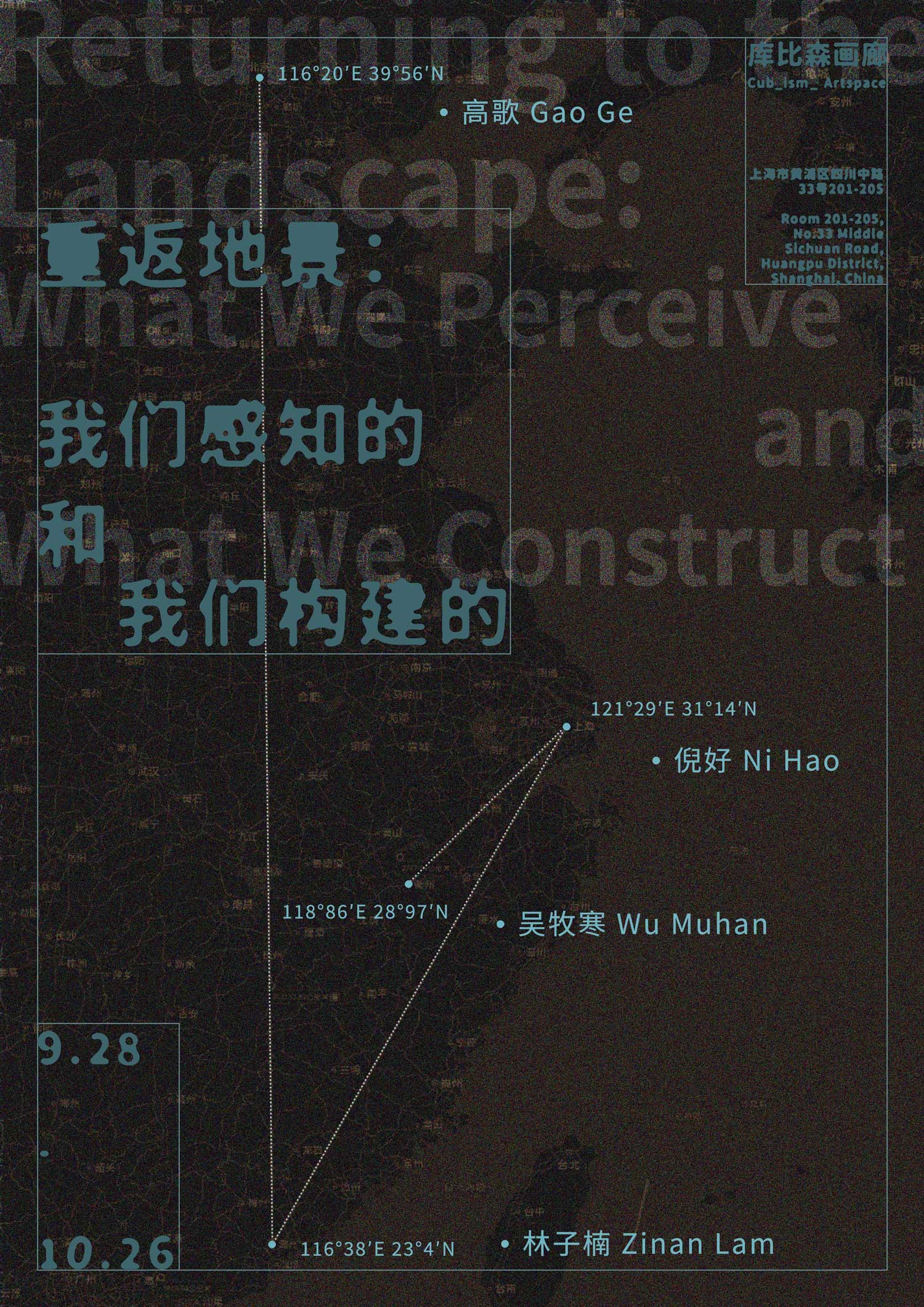Together with artists Gao Ge, Zinan Lam, Ni
Hao and Wu Muhan, Cub_ism_ Artspace is pleased to present the autumn group
exhibition ‘Returning to the Landscape: What We
Perceive and What We Construct’. The term ‘Landscape’ originated in Europe in the 15th
and 16th centuries, and was once used to describe the ‘Natural
Inland Scenery’ depicted in the works of medieval
landscape painters. With the expansion of regional production activities and
the development of humanistic concepts, artists no longer simply focused on the
natural scenery as seen by the naked eye, but rather on the cultural attributes
of it.
Gao Ge's works are often re-creations of
accidental images - to be precise, the original image for Gao Ge is no
different from the original colour or white canvas, which is regarded as the
backdrop - and then she will not hesitate to pour her passionate feelings for
life and her refined techniques into the picture, completely covering the
original expression of the image with an expressionist approach. The
expressionist approach completely overrides the original expression of the
image. Instead of saying that the strange and bizarre are the landscapes in Gao
Ge's eyes, it is more likely that the landscapes in her paintings are her way
of perceiving the world. The landscapes in Zinan Lam's paintings are more clean
and restrained. Influenced by street culture, the artist has been exploring a
harmonious and symbiotic relationship between urban life and the natural world:
for example, in his works, he presents a sea of turbulent waves - the landscape
of the sea is more like the artist's imagination and expectation of the urban
boundary.
Individual and collective histories are
always inextricably linked, and for Ni Hao, he usually captures buildings with
a unique historical background or places that have a special significance for
his personal growth as his landscapes. In his work, the artist tries to turn
the collective into the individual, while at the same time integrating the
too-personal into the grand narrative, and the tug-of-war between these two
actions is Ni Hao's practical way of thinking about social phenomena. In
contrast, Wu Muhan tends to minimise the influence of external factors in the
landscapes she constructs - although the landscapes are deliberately made, the
artist is more concerned with an unintended outcome: when focusing on the parts
of an object, the whole becomes blurred, and in a state of blurring it is
impossible to focus on the object itself. Wu Muhan respects the relationship
between objects, so she shows the state of objects after human intervention
with a distance and objective gaze.
Through the intricate presentation of the
landscape, we can clearly understand the artist's knowledge system, perception
and way of thinking; at the same time, the landscape also indicates the
historical background of the land and the way of existence of the social state.
We should understand that the self is already part of the landscape - above
that, we should try our best to determine the connection between the self and
the world.
Text by: Leslie Dong

